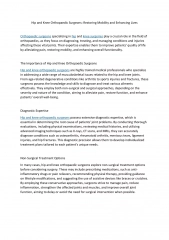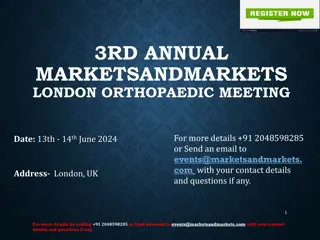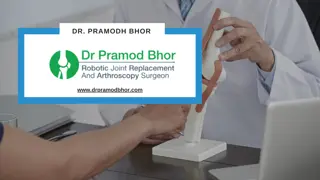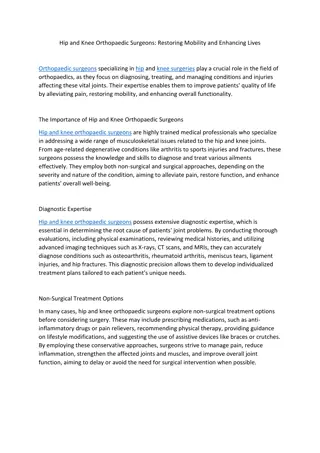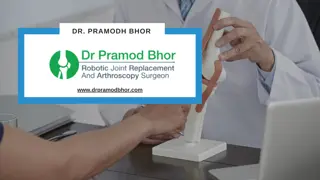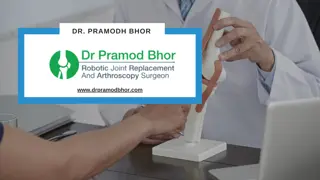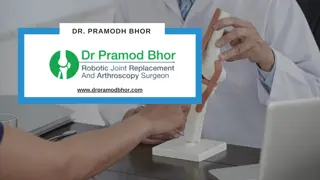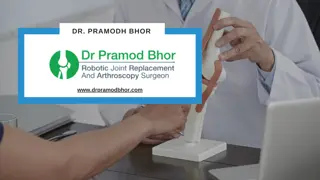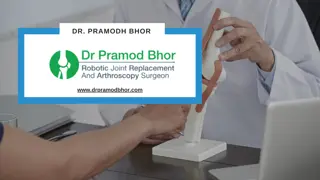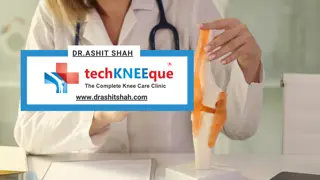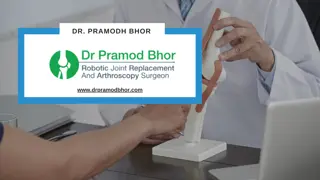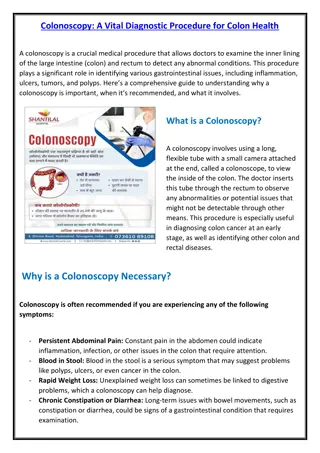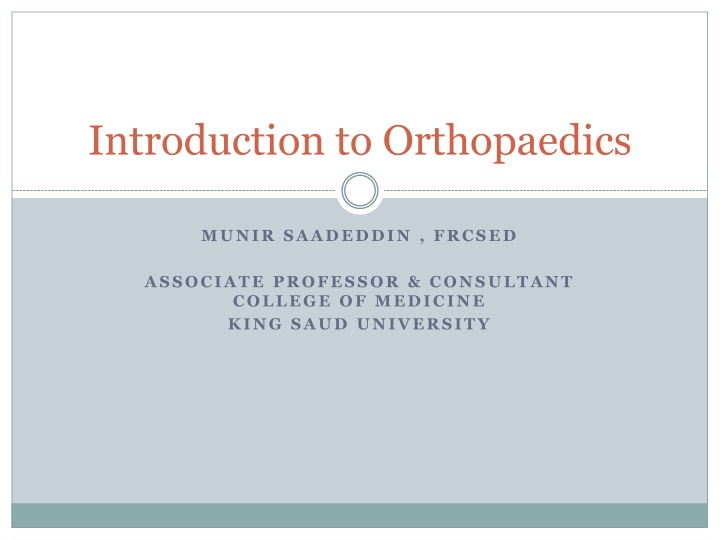
Orthopaedics: Definitions, Specialties, and Red Flags
Explore the world of orthopaedics with insights into its meaning, specialties, and the importance of red flags in identifying urgent conditions. Gain knowledge on orthopedic surgery, sub-specialties, and the critical role of clinical examination tests.
Download Presentation

Please find below an Image/Link to download the presentation.
The content on the website is provided AS IS for your information and personal use only. It may not be sold, licensed, or shared on other websites without obtaining consent from the author. If you encounter any issues during the download, it is possible that the publisher has removed the file from their server.
You are allowed to download the files provided on this website for personal or commercial use, subject to the condition that they are used lawfully. All files are the property of their respective owners.
The content on the website is provided AS IS for your information and personal use only. It may not be sold, licensed, or shared on other websites without obtaining consent from the author.
E N D
Presentation Transcript
Introduction to Orthopaedics MUNIR SAADEDDIN , FRCSED ASSOCIATE PROFESSOR & CONSULTANT COLLEGE OF MEDICINE KING SAUD UNIVERSITY
Objectives of this lecture To explain what is Orthopedic and what conditions will be discussed during this course. Explain what do we mean by Red Flags. List the different causes of Orthopedic disease. Describe some of clinical examination tests. Introduce titles of Clinical Skills which will be taught during this course.
What is the meaning of: Orthopaedics ORTHO = Straight , Upright , Correct Paios = Child First used by Nicolas Andry; a French doctor(1841) in a book titled: Orthopedia : the art to correct and prevent deformities in children
Orthopedic Surgery = Not only Bone Surgery Orthopedic specialty is the branch of medicine which manage trauma and disease of Musculoskeletal system. It includes : bones, muscles, tendons, ligaments, joints, peripheral nerves, vertebral column and spinal cord and its nerves.
Orthopedic Specialty Also Known as : Trauma and Orthopedic Surgery. Sub-Specialties in orthopedic include : Pediatric Orthopedic, Sport and Reconstructive Orthopedic, Orthopedic Trauma, Arthroplasty, Spinal Surgery , Foot and Ankle surgery and Orthopedic Oncology.
Red Flags Red Flag = Warning Symptom or Sign. Red flags should always be looked for and remembered. Presence of a red flag means the necessity for urgent or different action/intervention.
Examples of Red Flags Open Fractures : more serious and very high possibility of infection and complications Complicated Fractures : fracture with injury to major blood vessel, nerve or nearby structure Compartment Syndrome : increase in intra- compartment pressure which endangers the blood circulation of the limb and may affect nerve supply Acute joint Dislocations : requires urgent reduction or may cause serious complications
Examples of Red Flags Multiple Trauma or Pelvic Injury: more than one fracture or injury sustained at the same time ; consider massive blood loss and associated injuries. Cauda Equina Syndrome : compression of the nerve roots of the Cauda Equina at the spinal canal which affect motor and nerve supply to lower limbs and bladder (also saddle or peri-anal area). Infection of Bone, Joint and Soft Tissue : Osteomyelitis Septic Arthritis :Infection of the joint. Cellulitis :spreading Infection of the soft tissue. May cause septicemia or irreversible damage : Infection of the bone.
Orthopedic Diseases: Congenital or Acquired ? Congenital : present since birth( though may not be evident till some time later). Acquired : develop or begin after birth.
Acquired Orthopedic Conditions Acquired conditions include : Trauma Developmental Inflammation Infection Neuromuscular Degenerative Metabolic Tumor
Traumatic Injuries Fractures. Dislocations. Fracture dislocation: dislocation associated with nearby fracture. Soft tissues injuries: ligaments, tendons, menisci. Nerve injuries. Epiphyseal injuries.
Dislocations Complete separation of the articular surface Distal to proximal fragment Anterior, Posterior, Inferior, Superior. Acute dislocation may be complicated by neurovascular injury. Acute dislocations require urgent reduction
Dislocation and Fracture dislocation of the Spine often results in Paralysis
Intra-articular Fractures If displaced ; should always be treated by ORIF= (Open Reduction and Internal Fixation) failure to reduce and fix such fracture results in loss of function, deformity and early degenerative changes
Developmental: SCFE (Slipped Capital Femoral Epiphysis)
Developmental Foot deformity: Hallux Valgus File:Hallux Valgus-Aspect pr op d charge.JPG
Degenerative Disorders Occur at any joint Can be primary or secondary Increased wear and tear Can lead to pain and/or deformity and/or loss of function Increase with advancing age Management depends on type and age


